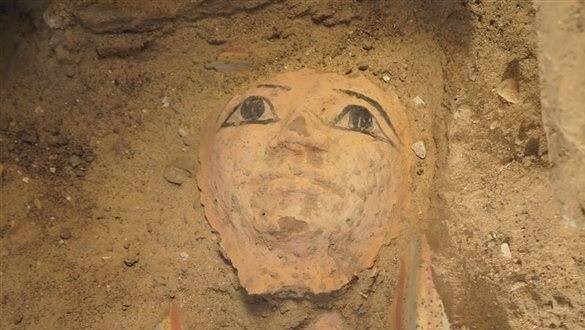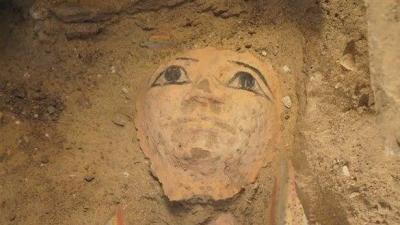The Egyptian Ministry of Tourism and Antiquities announced today, Thursday, that a "joint Egyptian-Japanese archaeological mission has discovered a rock tomb dating back to the Second Dynasty, along with several architectural elements, burials, and archaeological finds in the Saqqara area in Giza Governorate."
The ministry stated in a press release that "the joint mission between the Supreme Council of Antiquities and Waseda University reached this discovery during its current excavation season inside and above the catacombs in the archaeological site of Saqqara."
The statement quoted Mustafa Waziri, Secretary-General of the Supreme Council of Antiquities, saying that "the study of the architectural design of the discovered tomb and the pottery dishes and jars found inside indicate the historical period of its construction, which dates back to the Second Dynasty (approximately from 2890 to 2686 BC)."
The Saqqara area is located 35 kilometers southwest of Giza and contains several pyramid complexes of the kings of the Third, Fifth, and Sixth Dynasties, as well as tombs of high-ranking state officials adorned with scenes depicting everyday life in the Old Kingdom.
Mohamed Youssef, the General Director of Saqqara Antiquities and the head of the mission from the Egyptian side, stated that "the burials uncovered include the remains of a human burial for a man with a colored mask, another burial of a small child, in addition to several burials from the Late Period and Ptolemaic era, which contained a coffin from the Eighteenth Dynasty in poor condition, inside of which was a well-preserved alabaster vessel."
Nuzomu Kawai, head of the mission from the Japanese side, clarified that "the mission found many archaeological artifacts, including two terracotta statues of the goddess Isis and the child god Harpokrates riding a bird, a mask with remnants of green and white colors, parts of amulets made of faience for the goddess Isis and the god Bes, a piece of a shabti made of limestone with remnants of hieroglyphic inscriptions, a faience amulet representing the Eye of Horus, a pottery lamp, and ostraka made of pottery inscribed with hieratic writing, in addition to some pottery tools and fragments."
Kawai indicated that "the mission has been conducting registration and documentation of all discoveries and expressed optimism about the possibility of the mission achieving further discoveries in the area during its upcoming excavation seasons to unveil more secrets of the Saqqara archaeological site."




